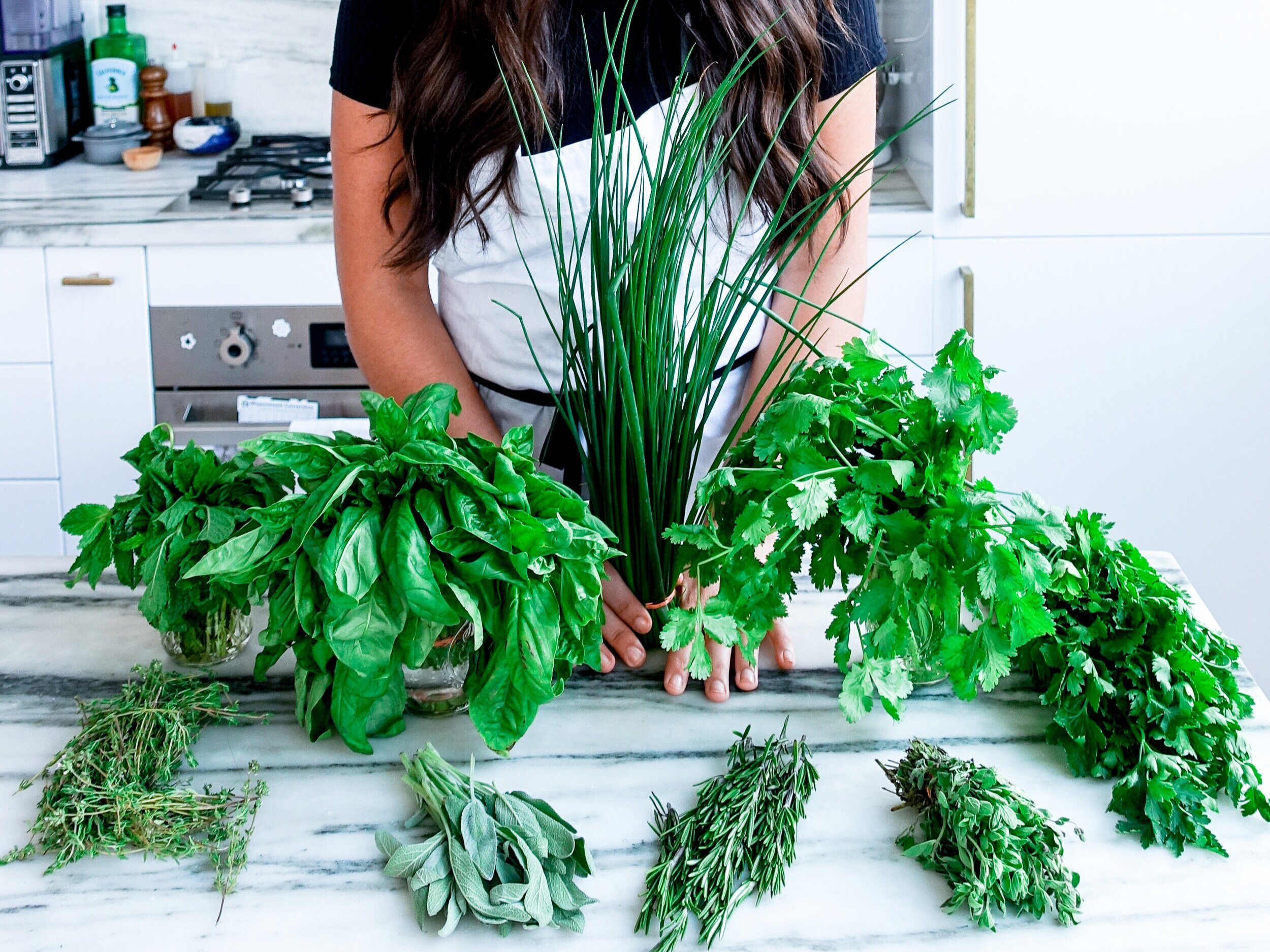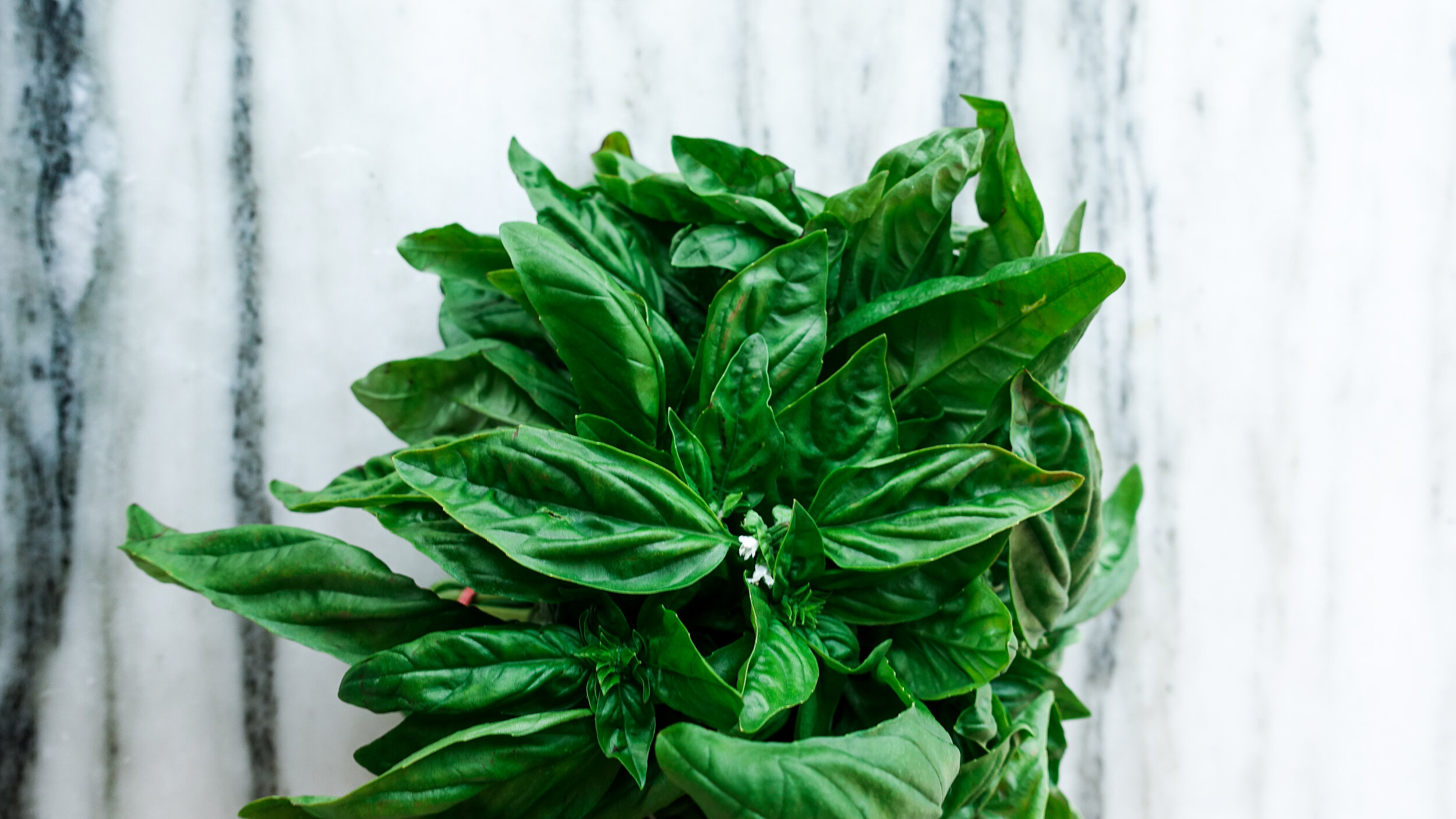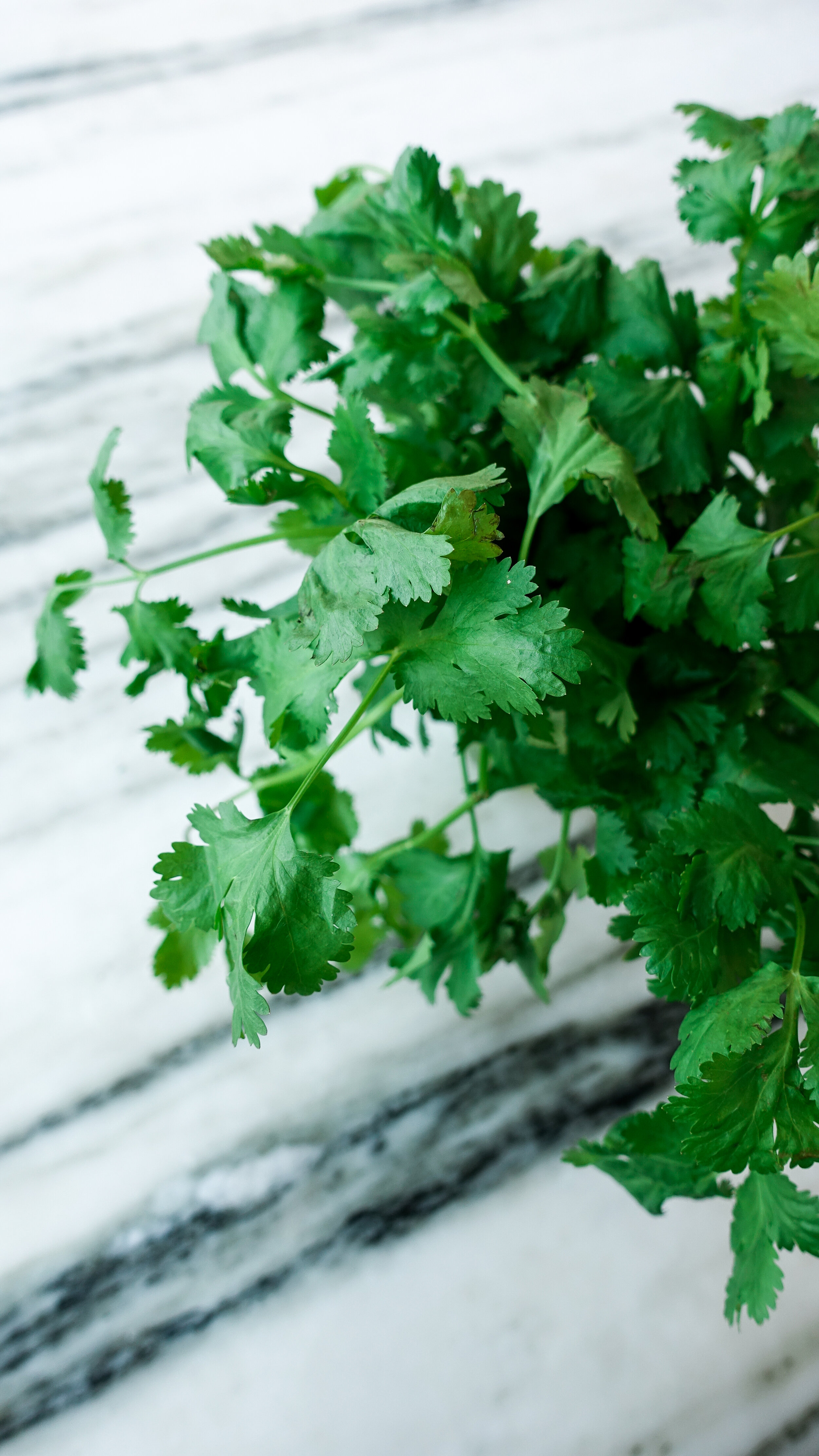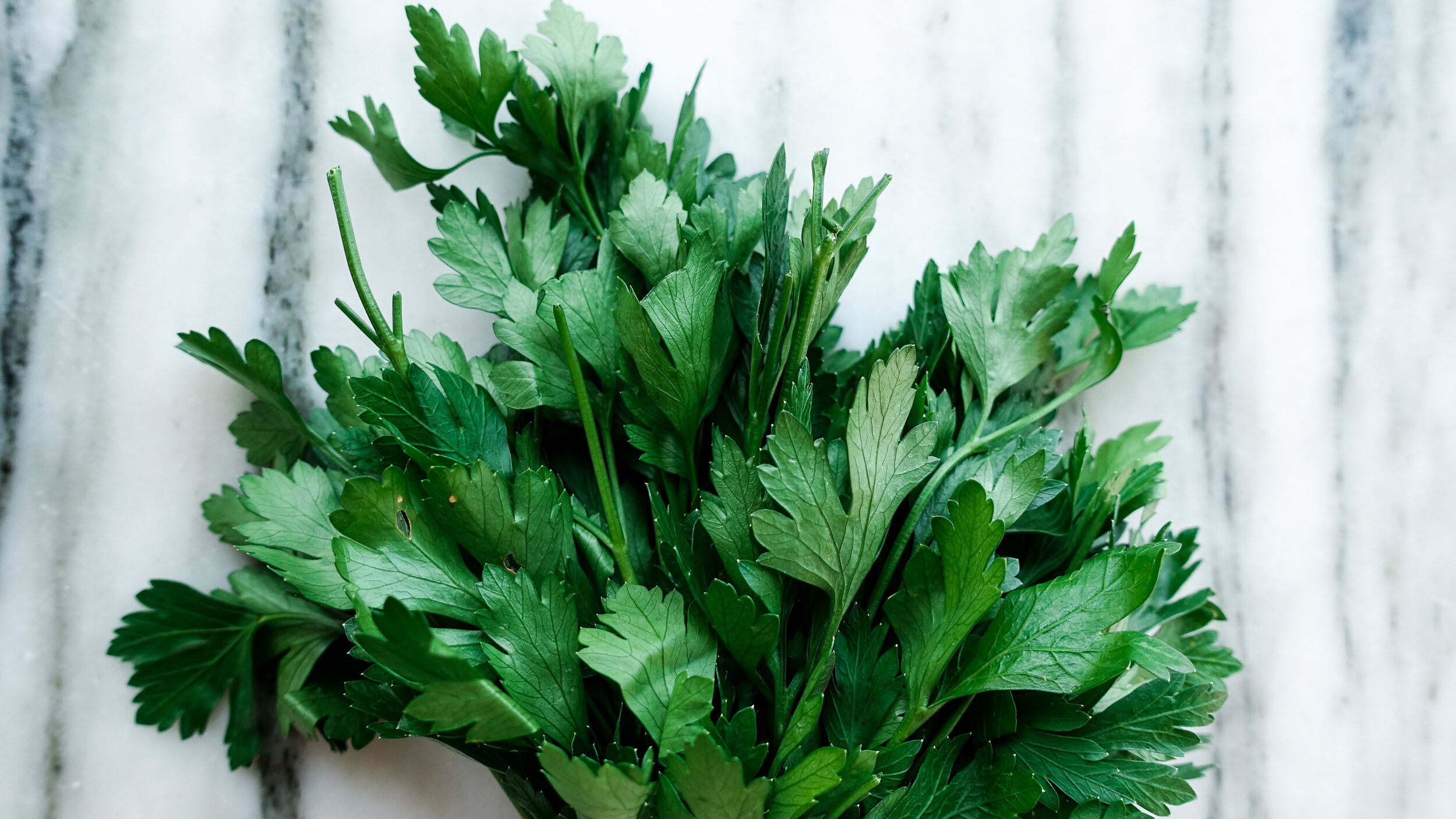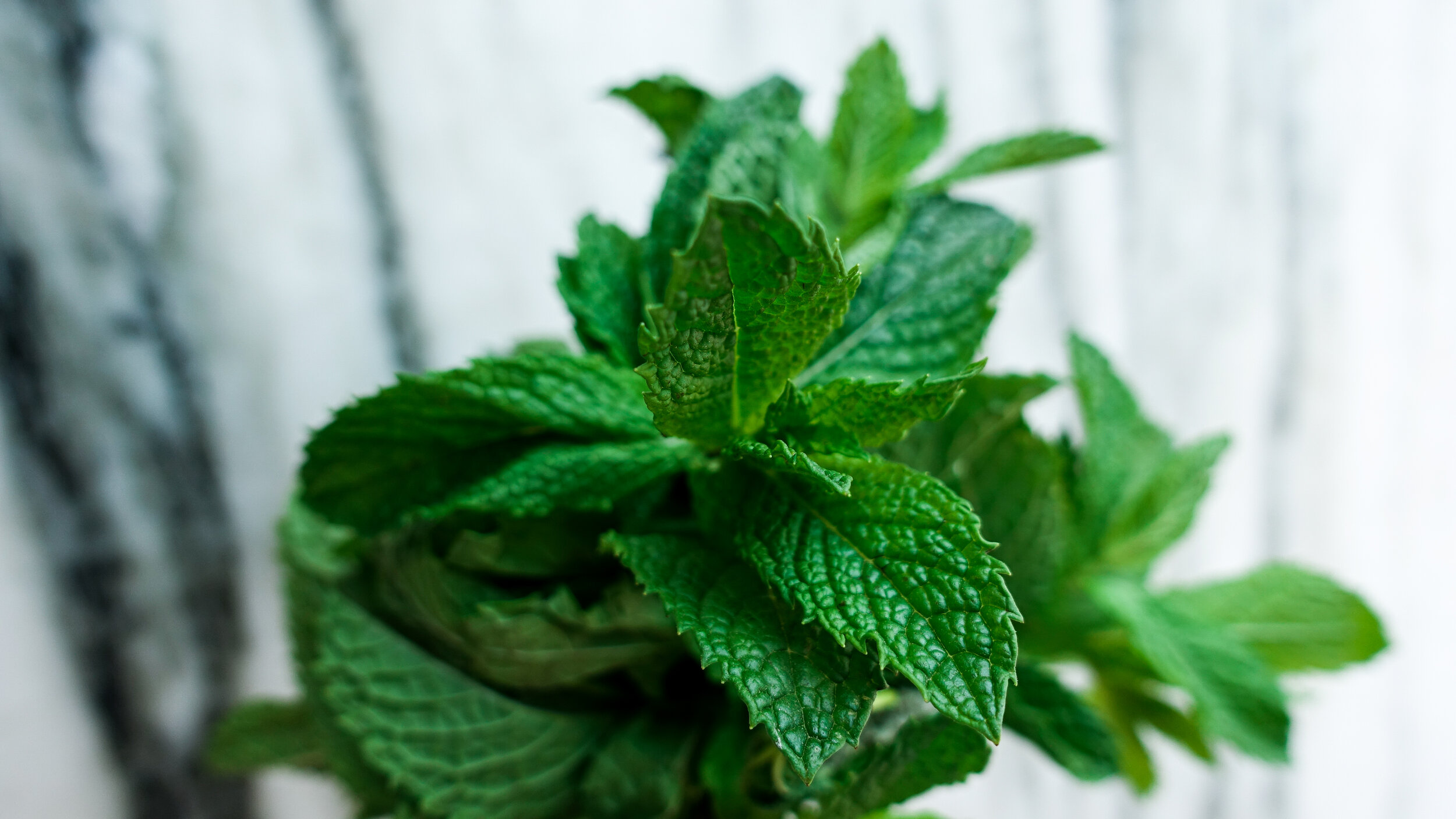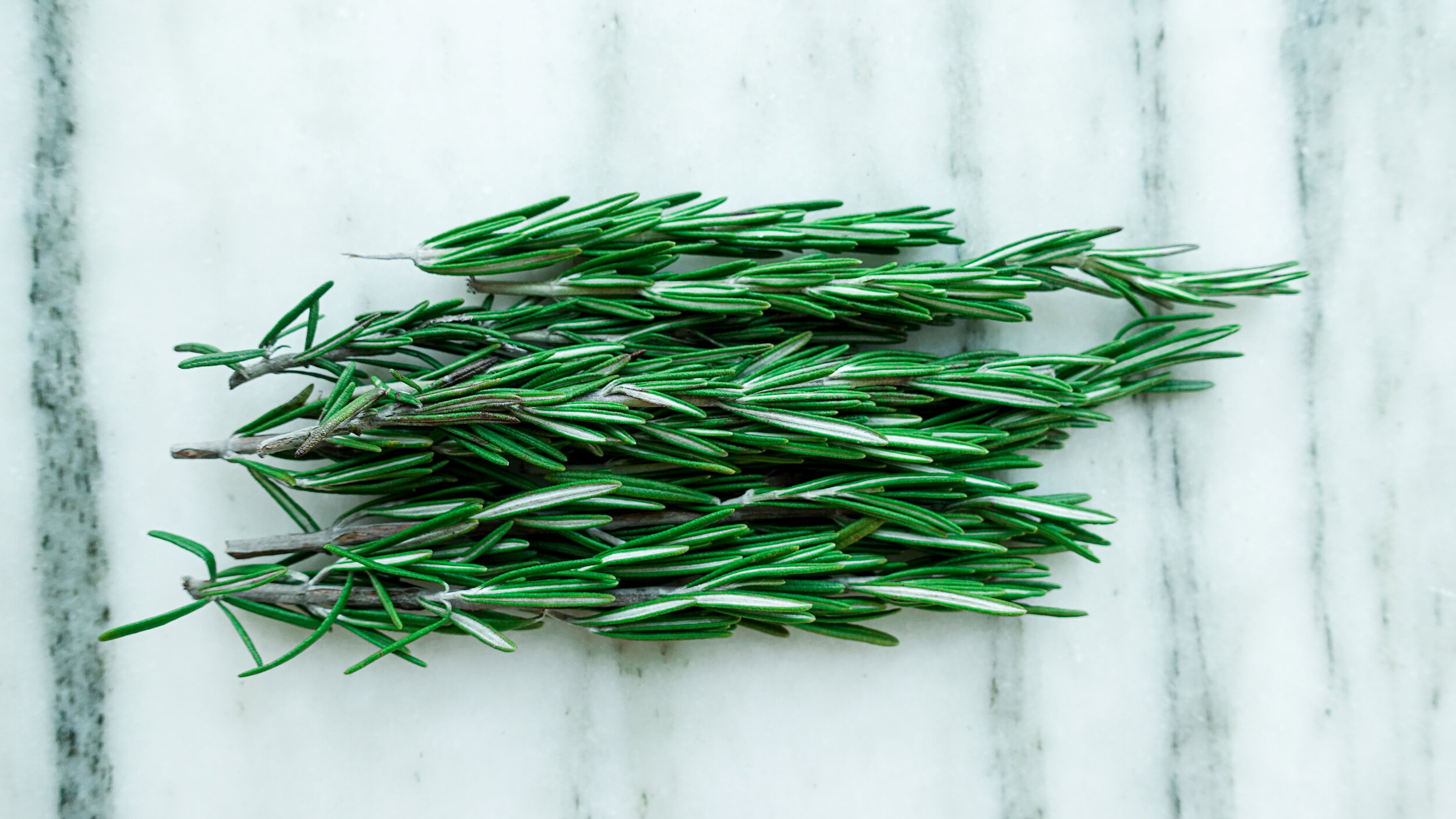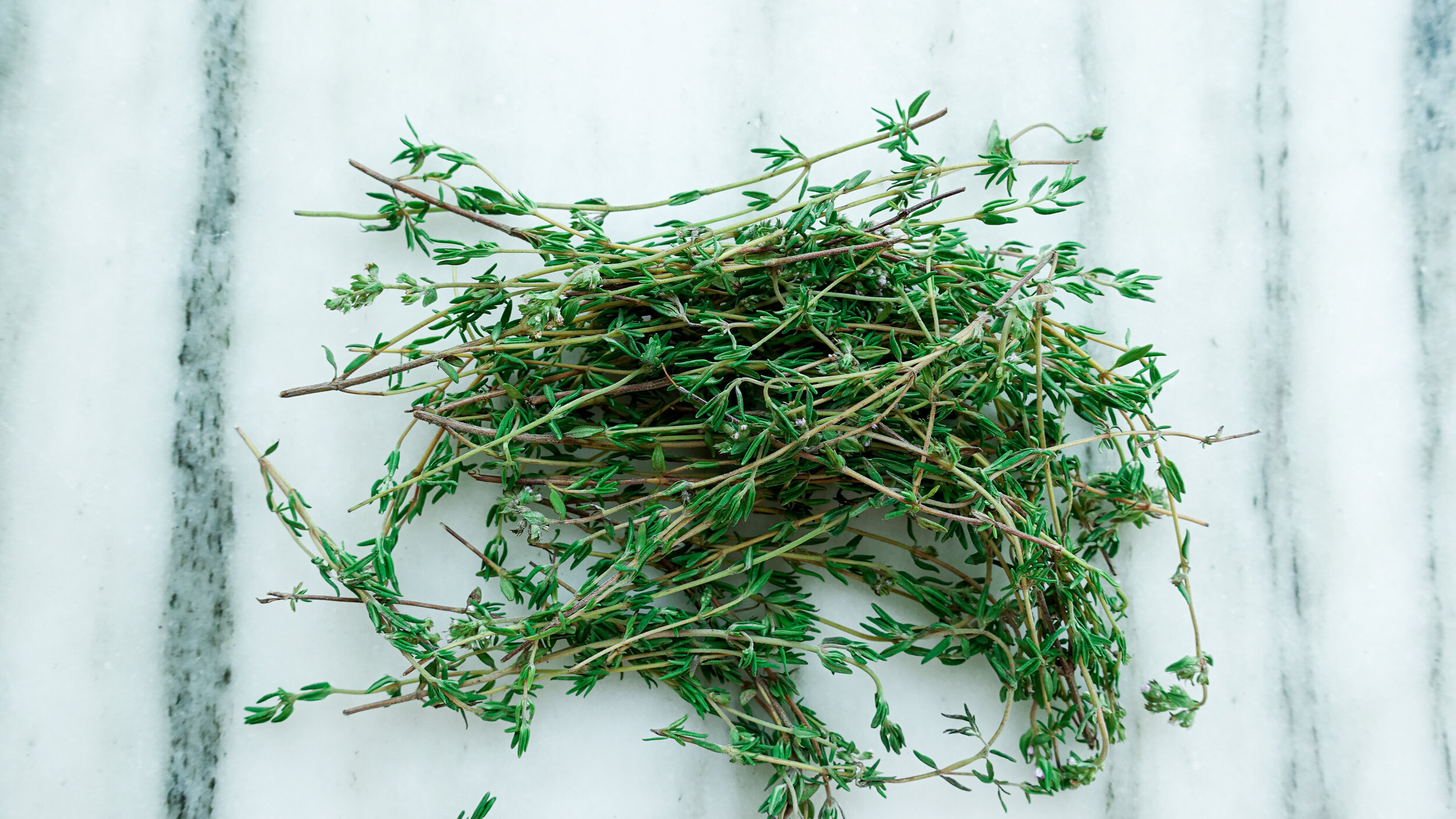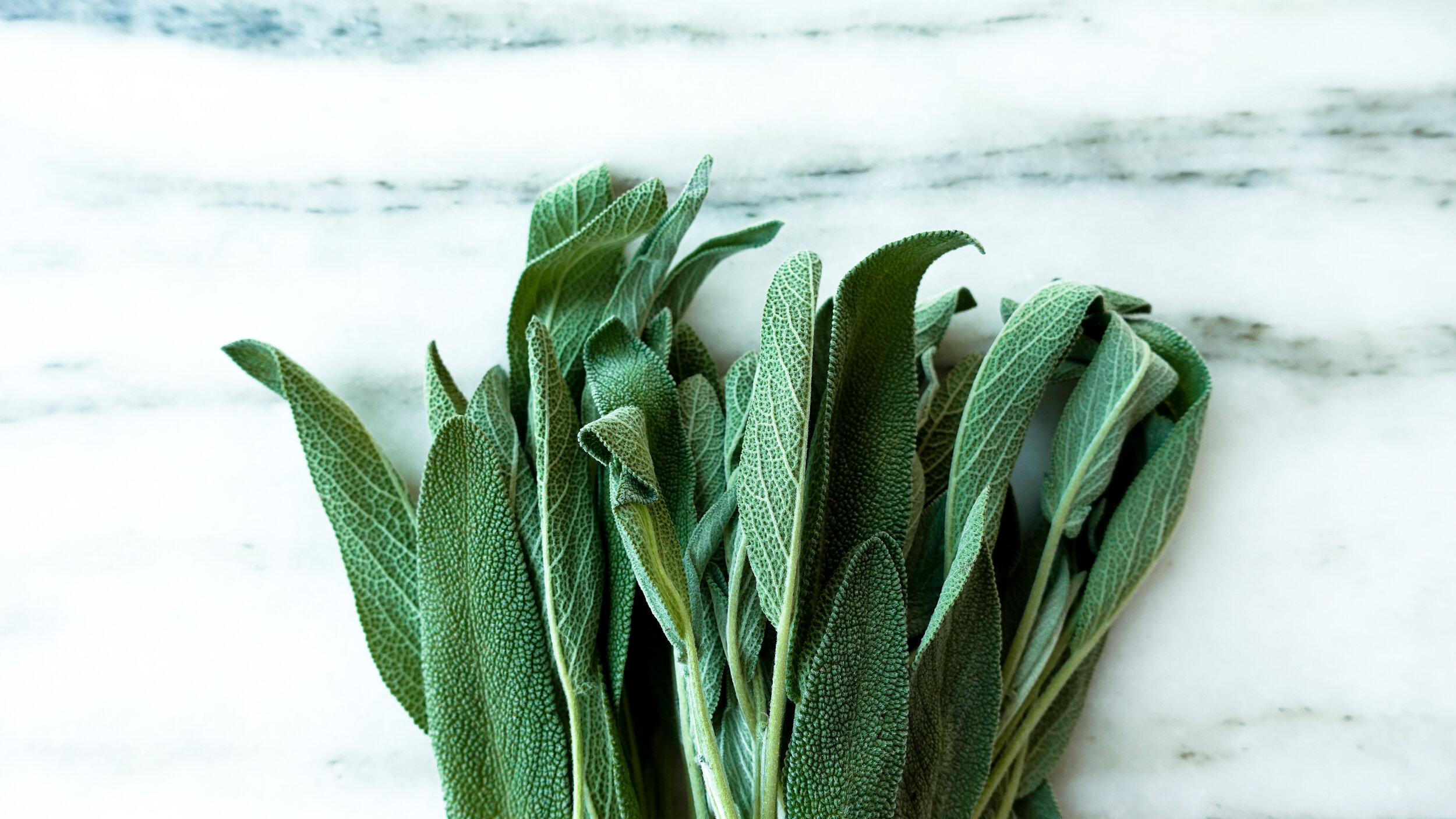Ultimate Guide to Herbs
This is my crash course on herbs, so buckle up! We’re all out here making dope dishes and magnificent meals, but sometimes you just need a helping hand to round out all of your flavors. So, when in doubt, come check this out and we can run through the complicated world of herbs together. I gotchu pal. The following herbs are the 10 that I use most frequently in my kitchen.
Basil
Basil is peppery and sweet, leaving a warm sensation on the tongue. It should always be added at the end of your cooking process to prevent the heat creating a bitter flavor. This herb is most commonly used in tomato sauce and other sauces, salads, and curries. But, basil is so versatile and can be nicely matched with a variety of flavors, so knock yourself out!
Cilantro
Cilantro is bright and citrusy, although some people find it has a soapy flavor. This herb is most commonly used in Indian, Mexican, and Vietnamese cooking and brings a big punch of flavor to any dish.
Dill
Dill is strong and grassy. This herb is most commonly used in pickling, and in creamy dips to add freshness and extra flavor.
Parsley
Parsley is herbaceous and peppery. This herb is most commonly used in stocks, stew and sauces, and is most popular in Italian and French cuisine. Parsley will add a gentle freshness to any dish.
Mint
Mint is sweet and cool, and can be used in both savory and sweet dishes. This herb is most commonly found in Thai and Middle Eastern cuisine. The most popular varieties are peppermint and spearmint.
Rosemary
Rosemary is pungent with an essence of pine. This herb is most commonly used to flavor proteins and starches during the cooking process.
Thyme
Thyme is woody with a background of mint. This herb is most commonly used to add layers of flavor to broths, stews, soups, or braises in French and Middle Eastern cuisine. Additionally, it can be used to brighten up heavier dishes such as rice, potatoes, or bread.
Sage
Sage is sweet and woody with a touch of bitterness. It has a pine-like aroma and accents of pepper. This herb is most commonly used with meats, dairy, breads, and pastas to contrast their richness.
Oregano
Oregano is sweet and spicy. This herb is most commonly used in Mediterranean, Greek, and Italian cuisine. If you are using dried oregano, use it sparingly in order to avoid a very strong and overpowering flavor.
Chives
Chives have a subtle onion flavor, as it is a member of the onion family. This herb is most commonly used to counter the richness of foods like bleu cheese and creamy spreads
So, now that we’ve put all of these herbs in their place it’s time to get cooking. I love using fresh herbs when I cook because they can really take a dish to the next level. Of course, there are so many more herbs out there than just these ten so exploooore and always taste to decide what to pair your herbs with!!

